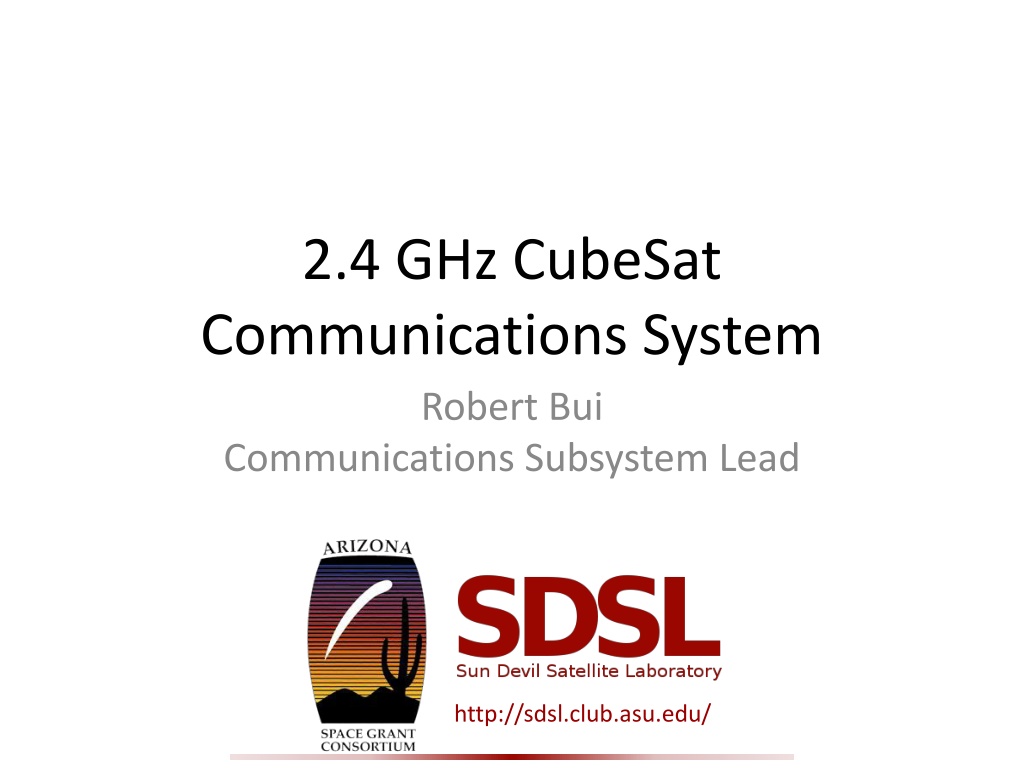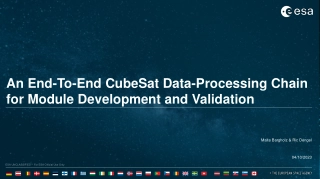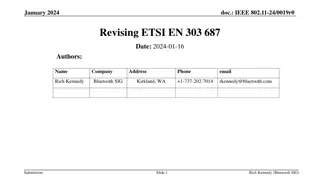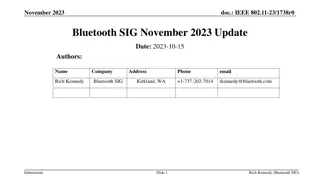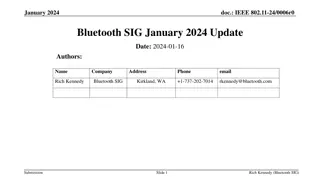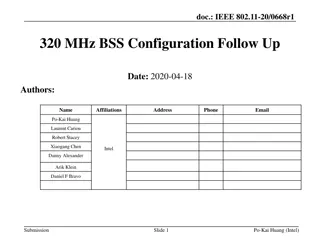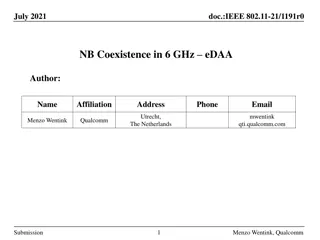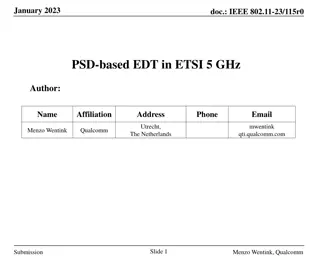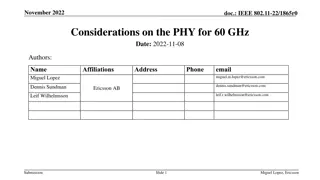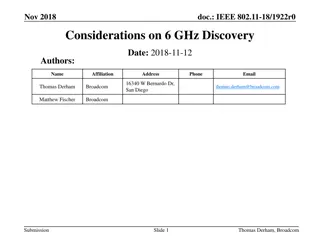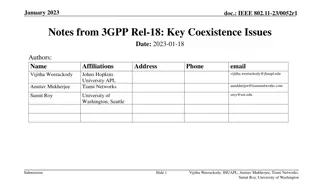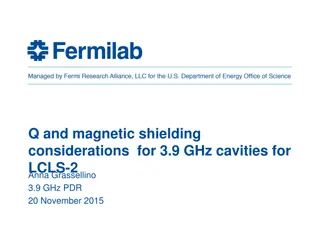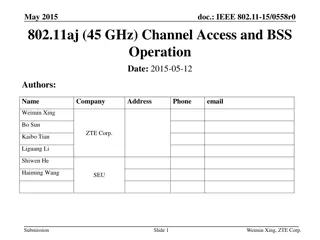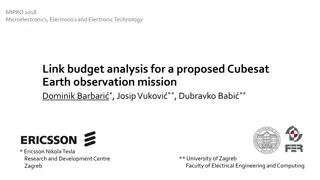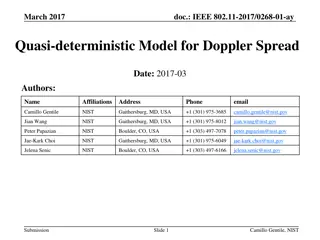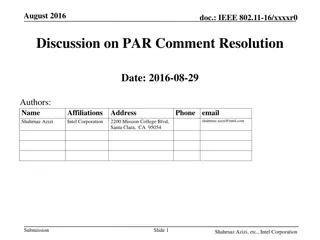2.4 GHz CubeSat Communications System Overview
The 2.4 GHz CubeSat Communications System, led by Robert Bui, aims to establish a reliable data link between the SDS-1 Cube Satellite and the ASU ground station. Operating on the 13 cm amateur ham radio band at frequencies of 2400-2450 MHz, the system utilizes a Transceiver (MHX-2420) with a link rate of 19.2-230.4 kbps. The SDS-1 system includes a Patch Antenna and Ground Station setup, with plans for further testing and integration in the future.
Download Presentation

Please find below an Image/Link to download the presentation.
The content on the website is provided AS IS for your information and personal use only. It may not be sold, licensed, or shared on other websites without obtaining consent from the author.If you encounter any issues during the download, it is possible that the publisher has removed the file from their server.
You are allowed to download the files provided on this website for personal or commercial use, subject to the condition that they are used lawfully. All files are the property of their respective owners.
The content on the website is provided AS IS for your information and personal use only. It may not be sold, licensed, or shared on other websites without obtaining consent from the author.
E N D
Presentation Transcript
2.4 GHz CubeSat Communications System Robert Bui Communications Subsystem Lead http://sdsl.club.asu.edu/
Overview Communications System Overview SDS-1 Communications Description Ground Station Description Link Budget Summary The SDS-1 Cube Satellite 2
Objective Create and ensure a reliable data link between the SDS-1 and the ASU ground station for transmitting and receiving telemetry, commands and photos. Operate using the 13 cm amateur ham radio band at the frequencies of 2400-2450 MHz. 3
SDS-1 Communications System Transceiver (MHX-2420) Link Rate: 19.2 - 230.4 kbps Frequency: 2.4000- 2.4835 GHz (FHSS) Transmit and Receive Bandwidth: 280 kHz Sensitivity: -107 dBm FEC and 32 bits CRC Max Output Power: 1 W MHX-2420 (Courtesy of Microhard Systems Inc.) 4
SDS-1 Communications System Patch Antenna (30 mm x 30 mm) Expected Gain: 6 dBi (Boresight) 4 dBi ( 30 ) 0 dBi ( 60 ) Circularly Polarized Radiation Pattern of the Patch Antenna 5
SDS-1 Communications System Patch Antenna Composition of the Patch Antenna Front Side Back Side 6
Ground Station Two 30 dBi Dish Antennas Linearly Polarized Beam Width: 5.3 Azimuth/Elevation Rotators Tracking Software MHX-2420 Ground Station Design 7
Link Budget Summary Orbit Altitude 350 km Without LNA Space Craft Elevation Angle Received Signal Strength MDS Link Margin With LNA deg dBm dBm dB 10 45 90 -110.3 -107 -3.3 -101.7 -107 5.3 -98.9 -107 8.1 Space Craft Elevation Angle Received Signal Strength MDS Link Margin deg dBm dBm dB 10 45 90 -112.3 -116 3.7 -103.7 -116 12.3 -100.9 -116 15.1 8
Future Work Test patch antenna in ASU s EMAC facility and finalize design. Assemble ground station. Perform communication tests between the ground station and patch antenna. Integrate the patch antenna with the SDS-1. 9
Questions or Comments? Name: Robert Bui Website: http://sdsl.club.asu.edu/ Email: sdsl@asu.edu or robert.bui@asu.edu 10
